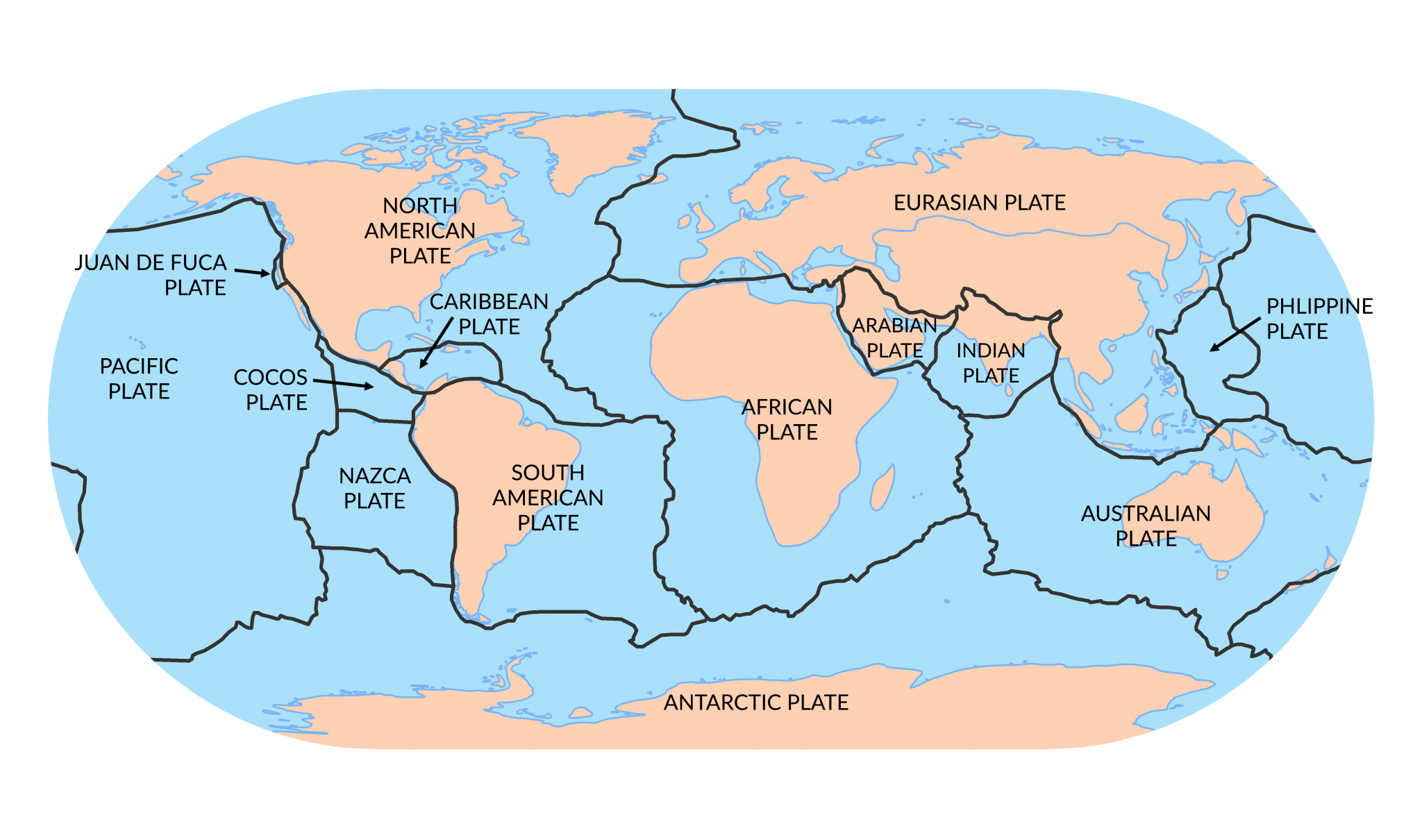Tectonic Plates Drawing
Tectonic Plates Drawing - How can i teach my students about tectonic plates? Plates that move towards each other causes mountain ranges to spring up and quite often volcanic activity. The weathered slopes of snowdonia. Web direct link to sebastian masongsong's post “the tectonic plates move.” more the tectonic plates move because the heat from radioactive processes within the planet’s interior causes the plates to move, sometimes toward and sometimes away from each other. Explore how plates move on the surface of the earth. Web the diagram below shows the structure of the earth. Change temperature, composition, and thickness of plates. Web we recommend using the latest version of chrome, firefox, safari, or edge. Web there are three kinds of plate tectonic boundaries: Each land mass can be adjusted by modifying their x, y, and z axis rotation (this can be tedious).
Divergent (constructive or pulling apart) convergent (destructive or collision) conservative (sideways or transform) direction of plate movement. Ks3 chemistry ks3 earth and atmosphere earth and atmosphere extra resources. Ks3 tectonic plate boundaries match and draw. These points are the beginning and end position for the animation. Adjust the scale for positions a and b (in percent). Plate tectonics is a theory about how earth's lithosphere is divided into a series of rigid plates; Earth's lithosphere is broken up into tectonic plates, which move slowly over time.
Teachers' zone help with using the site test your knowledge. Web there are three kinds of plate tectonic boundaries: Set one of the two positions (a or b) to adjust. These plates will cause a continental rift (as shown on the far right of the diagram above) 3 moving towards. Ks3 tectonic plate boundaries match and draw.
Change temperature, composition, and thickness of plates. Students cut and color pieces of the continents according to fossil evidence. These points are the beginning and end position for the animation. Set one of the two positions (a or b) to adjust. The weathered slopes of snowdonia. How can i teach my students about tectonic plates?
The process of drawing a picture involves students much more deeply than reading or. Web there are seven major tectonic plates that cover most of the earth and have an area of more than 20 million km². There are two different types. How can i teach my students about tectonic plates? Explore how plates move on the surface of the earth.
The process of drawing a picture involves students much more deeply than reading or. And, how movements of these plates produce earthquakes, volcanoes, ocean trenches, mountain. A short film for detailing tectonic plates, their movement and boundaries, and what this means for earth. Web what is plate tectonics?
Divergent, Convergent, And Transform Plate Boundaries.
Ks3 chemistry ks3 earth and atmosphere earth and atmosphere extra resources. Divergent (constructive or pulling apart) convergent (destructive or collision) conservative (sideways or transform) direction of plate movement. Plates that move towards each other causes mountain ranges to spring up and quite often volcanic activity. And, how movements of these plates produce earthquakes, volcanoes, ocean trenches, mountain.
Web What Is Plate Tectonics?
These plates will cause a continental rift (as shown on the far right of the diagram above) 3 moving towards. Each land mass can be adjusted by modifying their x, y, and z axis rotation (this can be tedious). The movement of two plates running next to each other causes earthquakes. Web this is a list of the 15 major tectonic plates shown on the map at the top of this page:
The Earth's Crust Is Made Up Of Large Slabs Called.
Change temperature, composition, and thickness of plates. Web plate tectonics is a scientific theory that explains how major landforms are created as a result of earth’s subterranean movements. The weathered slopes of snowdonia. Ks3 tectonic plate boundaries match and draw.
Plate Tectonics Is A Theory About How Earth's Lithosphere Is Divided Into A Series Of Rigid Plates;
In geography, taking a slice through a structure to see inside is called a cross section. These plates fit together like jigsaw puzzle pieces. Tectonic plates move around very slowly and this movement changes. Web 1 side to side.


:max_bytes(150000):strip_icc()/tectonic-plates--812085686-6fa6768e183f48089901c347962241ff.jpg)


